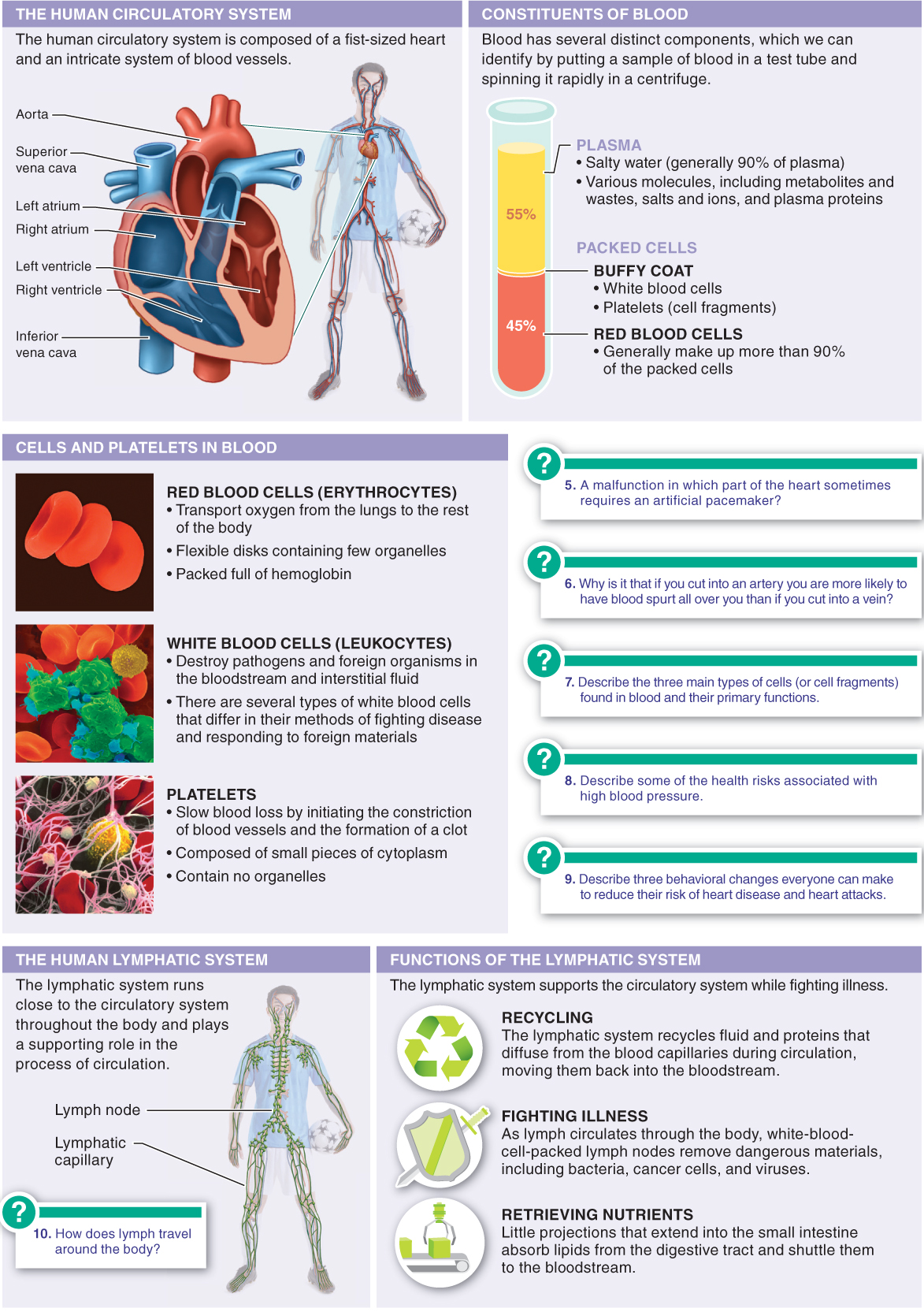21.4–21.11
21.4–The human circulatory system consists of a heart, blood vessels, and blood.
Blood flows from the heart to the tissues of the body and back to the heart again through a series of endothelium-

870
Q
Why do most fishes swim with their mouths open?
- a) They do this to take in any food particles suspended in the water.
- b) This is a cooling mechanism to help regulate body temperature.
- c) This allows a fish to swim faster.
- d) This helps prevent infection by mouth parasites.
- e) They do this to ventilate their gills.

Carbon dioxide transport differs from oxygen transport in the circulatory systems of mammals, because:
- a) CO2 is transported mostly in the plasma, while O2 is transported mostly in the red blood cells.
- b) CO2 is transported mostly in the platelets, while O2 is transported mostly in the red blood cells.
- c) CO2 is transported mostly via the lymphatic system, while O2 is transported mostly in the red blood cells.
- d) CO2 is bound primarily to receptors within the red blood cell membrane, while O2 is bound primarily to hemoglobin inside the red blood cells.
- e) CO2 is transported mostly in the plasma, while O2 is transported mostly in hemoglobin within the plasma.

Breathing in birds is more like “breathing” in fishes than in mammals, because:
- a) water and high-
altitude air have similar viscosity. - b) oxygen never runs into a dead end.
- c) both birds and fishes have gill arches.
- d) the blood vessels in bird lungs, like those in fish gills, are insulated with a fatty coating, reducing heat loss.
- e) in birds and fishes, but not mammals, the heart pumps in a two-
circuit system of blood flow.

Which of the following are the main muscles used in breathing?
- a) back muscles and thoracic muscles
- b) intercostal muscles and pectoral muscles
- c) diaphragm and thoracic muscles
- d) diaphragm and back muscles
- e) intercostal muscles and diaphragm

Under resting metabolic conditions, what percentage of oxygen is released from the blood to the tissues?
- a) 1%
- b) 75%
- c) 25%
- d) 100%
- e) 50%
